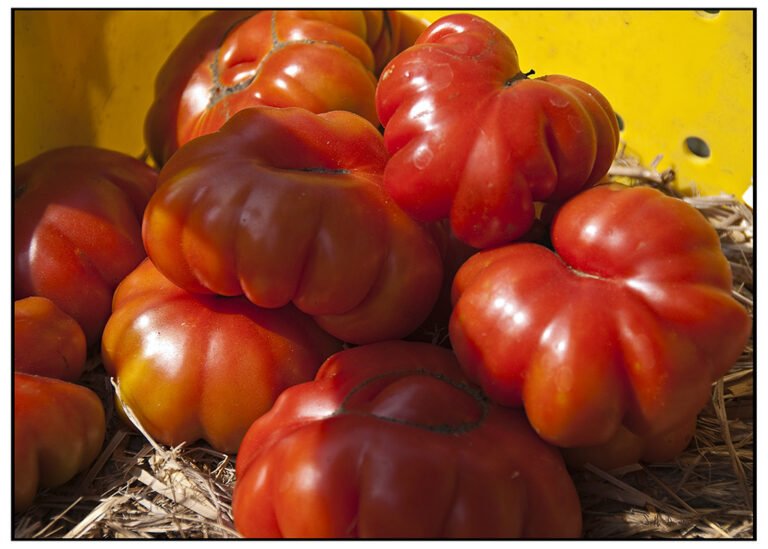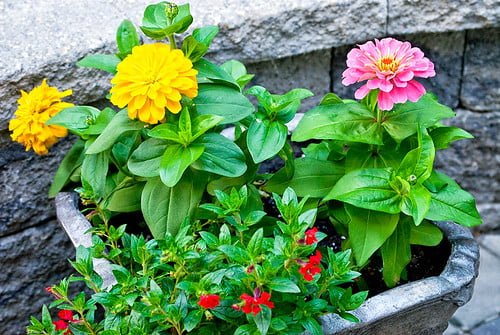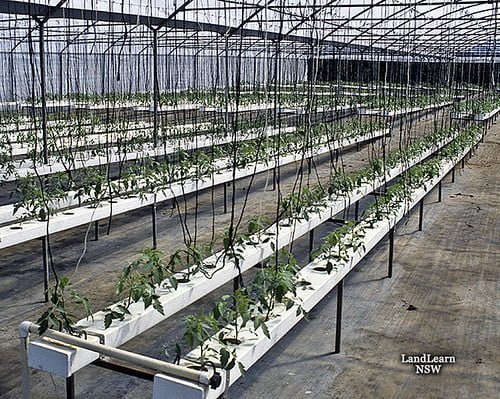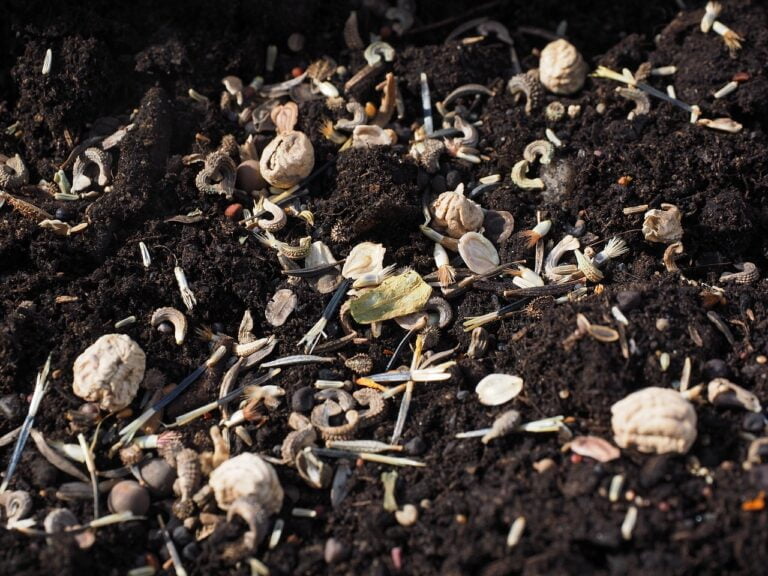Understanding the Life Cycle of a Watermelon Plant
In the life cycle of a watermelon plant, seeds germinate within 3-14 days. The hypocotyl stem emerges, supporting the seedling. Radicles form the primary roots, while cotyledons provide initial nutrients. Throughout vegetative growth, true leaves develop for photosynthesis. Flower production is essential, with female flowers containing ovaries for fruit. Male flowers provide pollen for pollination. Fruit development follows, influenced by seed characteristics. Harvest ripe melons when indicators signal readiness. Watch for common growth issues like yellowing leaves or stunted growth. By understanding these stages, successful cultivation can be achieved.
Seed Germination and Sprouting
During seed germination and sprouting, watermelon seeds undergo a process that typically lasts 3-14 days before emerging as seedlings anchored by the hypocotyl stem in the soil. The hypocotyl stem plays an important role in supporting the emerging seedling as it pushes through the soil. As the seed germinates, radicles, which are the embryonic roots, start to develop from the seed. These radicles will eventually form the primary root system of the watermelon plant, allowing it to absorb water and essential nutrients from the soil.
The hypocotyl stem, along with the radicles, ensures that the seedling remains firmly anchored in the soil during the initial stages of growth. As the seedling continues to grow, cotyledons, which are the first leaves to emerge, provide the necessary nutrients for the young plant until it can photosynthesize effectively. It is important to protect these emerging seedlings from cold temperatures and overwatering, as these conditions can hinder the germination process and lead to stunted growth.
Understanding the intricate process of watermelon seed germination and sprouting is essential for ensuring the successful growth of healthy watermelon plants. By providing the right environmental conditions and care during this stage, you can set the foundation for a robust and thriving watermelon plant.
Vegetative Growth Stage
Emerging from the stage of seed germination and sprouting, the watermelon plant enters the vegetative growth stage, where it undergoes significant development in leaf structure and vine growth to support photosynthesis and overall plant health. During this phase, watermelon seedlings begin to produce true leaves, which are vital for photosynthesis, enabling the plant to convert light energy into chemical energy. The main vine of a watermelon plant can reach lengths of 3-4 meters, providing structural support and facilitating the transport of nutrients and water throughout the plant.
As the plant progresses through the vegetative growth stage, there is a noticeable increase in leaf surface area. This expansion of foliage plays an essential role in the production of energy through photosynthesis. Within just a couple of weeks of growth, the plant develops sturdier and longer leaves, contributing to its overall robustness and ability to withstand environmental stressors.
Simultaneously, both the main vine and leaf growth occur, promoting the plant’s health and vigor. This coordinated development ensures that the watermelon plant establishes a strong foundation for future stages of growth and eventual fruit production. The vegetative growth stage sets the groundwork for the plant’s successful progression towards flowering and fruiting.
Flower Production and Pollination
How does flower production and pollination contribute to the development of watermelon fruit?
During the flower production and pollination stage of a watermelon plant’s life cycle, several key processes occur to make sure successful fruit development:
- Female flowers: Female watermelon flowers are important as they possess the ovary where fruit development begins. These flowers need to be pollinated to set fruit.
- Male flowers: Male watermelon flowers play a significant role by producing pollen. This pollen is necessary for fertilizing the female flowers, leading to fruit formation.
- Pollination: Successful pollination is a critical step in the process of watermelon fruit development. It is during this stage that the pollen from the male flowers reaches the stigma of the female flowers, enabling fertilization to occur.
- Role of bees: Bees are essential in the pollination of watermelon flowers. As they visit the flowers in search of nectar, they inadvertently transfer pollen grains between male and female flowers, facilitating the fertilization process essential for fruit set.
Understanding the intricate relationship between flower production, pollination, and the specific roles of male and female flowers is important for ensuring a successful watermelon fruit development process.
Fruit Development and Ripening
Fruit development in watermelons initiates following successful pollination, marking the beginning of the transformation from flower to mature fruit. The ovary of the pollinated female flower undergoes significant growth, eventually forming the watermelon fruit. During this developmental process, seeds start to form within the flesh, influencing the texture and flavor of the fruit as it matures. The specific variety of watermelon selected for cultivation plays a vital role in determining the size, shape, and sweetness of the final product. Different varieties exhibit varying maturation times, with smaller types generally reaching maturity quicker than larger ones.
As the watermelon fruit continues to mature, it undergoes a series of biochemical changes that culminate in ripening. Ripening is a complex process involving the conversion of starches into sugars, leading to the sweet taste characteristic of ripe watermelons. External indicators, such as the development of the characteristic watermelon stripes and a change in skin color, signal the progression of ripening. Additionally, ripe watermelons produce a hollow sound when tapped, indicating their readiness for harvest and consumption. Understanding the intricacies of fruit development, maturation times, and ripening is essential for cultivating high-quality watermelons with the best flavor and texture.
Harvesting Ripe Watermelons
When determining the best time for harvesting ripe watermelons, growers rely on a combination of visual cues and tactile indicators to guarantee peak flavor and sweetness. To make certain the watermelon is ready to harvest, here are some key ripeness indicators:
- Hollow Sound: Ripe watermelons produce a hollow sound when tapped, indicating readiness for harvest.
- Dull Appearance and Hard Skin: Look for a dull appearance and hard skin on the watermelon as additional signs of ripeness.
- Plump Blossom End: Check for a plump blossom end of the fruit, which indicates full maturity.
- Brown Tendrils: Tendrils near the fruit turning brown are a reliable indicator that the watermelon is ripe.
These indicators collectively provide growers with a dependable method to determine the best time for harvesting watermelons. However, it’s crucial to note that the only sure way to ascertain ripeness is by cutting open the watermelon to assess its readiness for harvest. By combining these visual and tactile cues, growers can make sure that the watermelons are harvested at their peak ripeness, guaranteeing a delicious and sweet fruit for consumption.
Common Plant Growth Issues
I observe that common growth issues in watermelon plants, such as poor pollination resulting in abnormal fruit shapes, can hinder best plant development. To combat poor pollination, I recommend planting nectar-rich flowers near watermelon crops to attract essential pollinators like bees. Additionally, diseases like anthracnose and fusarium wilt can also impede growth, emphasizing the importance of disease-resistant varieties and crop rotation for effective management.
Growth Problems
How can common growth problems impact the development of watermelon plants? Common growth issues like poor pollination, plant diseases, and insect problems can hinder the healthy development of watermelon plants. Here are some key points to take into account:
- Poor pollination can lead to misshaped fruits, impacting overall yield.
- Plant diseases such as anthracnose and fusarium wilt can weaken the plant and reduce fruit quality.
- To manage plant diseases, rotate crops and select disease-resistant watermelon varieties.
- Insect pests like cucumber beetles and squash bugs can harm the plants and decrease fruit production.
It is crucial to address these growth problems promptly to guarantee the best growth and development of watermelon plants.
Troubleshooting Tips
Troubleshooting common plant growth issues involves identifying and addressing specific factors that may be affecting the health and development of watermelon plants. Yellowing leaves can signal nutrient deficiencies or overwatering problems, while stunted growth often links to poor soil quality or insufficient sunlight exposure. Wilting plants may indicate either underwatering or root rot issues. Pest infestations by aphids or spider mites can also impede plant growth. Adequate spacing between plants is essential to prevent overcrowding and competition for nutrients, which can lead to stunted growth. Regular monitoring of plant health, proper watering practices, ensuring sufficient sunlight exposure, and promptly addressing any pest issues are key steps in troubleshooting and maintaining excellent watermelon plant growth.





